Один из частых вопросов, касающихся последних версий ОС от Майкрософт, включая Windows 10 — как зайти в БИОС. При этом чаще имеется в виде все-таки UEFI (часто характеризующийся наличием графического интерфейса настроек), новый вариант ПО материнских плат, который пришел на замену стандартному БИОС, и предназначенный для того же — настройки работы оборудования, опций загрузки и получения информации о состоянии системы.
В связи с тем, что в Windows 10 (как и в 
Вход в параметры UEFI из Windows 10
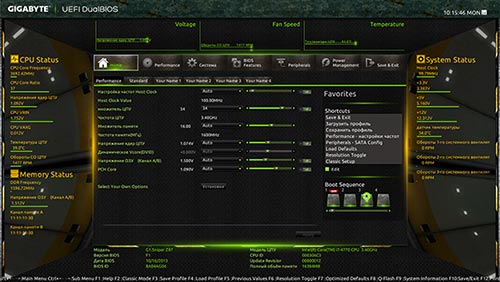
Для использования этого способа, Windows 10 должна быть установлена в режиме UEFI (как правило, так и есть), а вы должны иметь возможность либо войти в саму ОС, либо хотя бы попасть на экран входа в систему со вводом пароля.
В первом случае вам достаточно кликнуть по значку уведомлений и выбрать пункт «Все параметры». После чего в настройках открыть «Обновление и безопасность» и перейти к пункту «Восстановление».
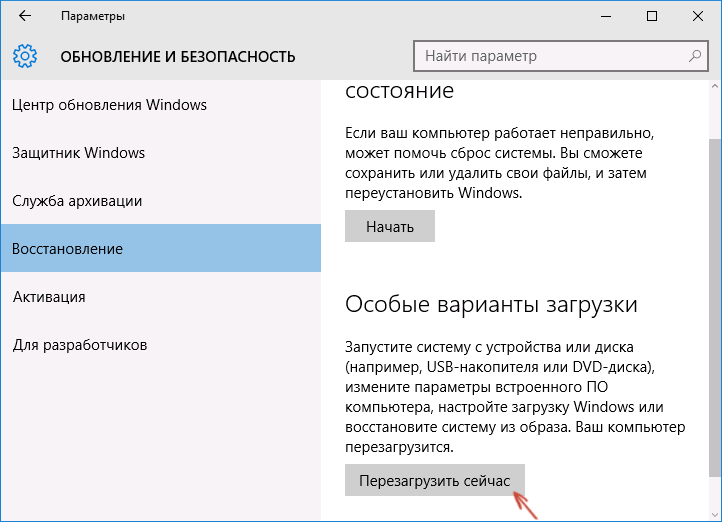
В восстановлении нажмите в разделе «Особые варианты загрузки» кнопку «Перезагрузить сейчас». После того, как компьютер перезагрузится, вы увидите экран такой же (или подобный) тому, что изображен ниже.
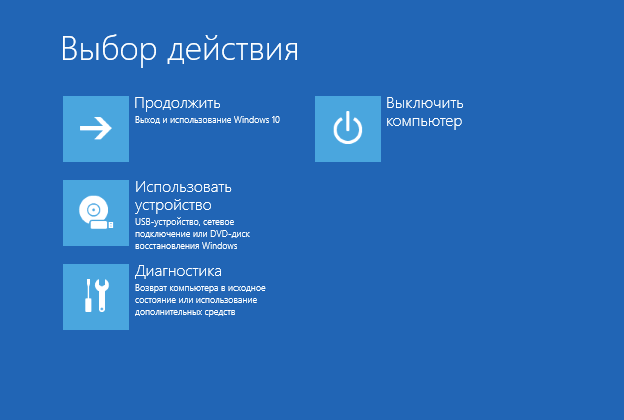
Выберите пункт «Диагностика», затем — «Дополнительные параметры», в дополнительных параметрах — «Параметры встроенного ПО UEFI» и, в завершение, подтвердите сове намерение, нажав кнопку «Перезагрузить».

После перезагрузки вы попадете в БИОС или, если точнее, UEFI (просто у нас по привычке настройки материнской платы обычно называют БИОС, наверное, так будет продолжаться и в дальнейшем).
В том случае, когда вы не можете войти в Windows 10 по каким-либо причинам, но можете попасть на экран входа, вы также можете зайти в настройки UEFI. Для этого, на экране входа в систему, нажмите кнопку «питание», а затем, удерживая клавишу Shift нажмите пункт «Перезагрузка» и вы попадете в особые варианты загрузки системы. Дальнейшие шаги уже были описаны выше.
Вход в БИОС при включении компьютера
Есть и традиционный, всем известный метод войти в БИОС (подходит и для UEFI) — нажать клавишу Delete (для большинства ПК) или F2 (для большинства ноутбуков) сразу при включении компьютера, еще до начала загрузки ОС. Как правило, на экране загрузки внизу отображается надпись: Press Название_Клавиши to enter setup. Если такой надписи нет, вы можете ознакомиться с документацией к материнской плате или ноутбуку, там должна присутствовать такая информация.
Для Windows 10 вход в БИОС этим способом это осложняется тем, что загрузка компьютера происходит действительно быстро, и не всегда эту клавишу можно успеть нажать (или даже увидеть сообщение о том, какую именно).
Для решения этой проблемы, вы можете: отключить функцию быстрой загрузки. Для этого, в Windows 10 кликните правой кнопкой мыши по кнопке «Пуск», выберите в меню «Панель управления», а в панели управления — электропитание.

Слева кликните «Действия кнопок питания», а на следующем экране — «Изменение параметров, которые сейчас недоступны».
Внизу, в разделе «Параметры завершения работы» уберите отметку «Включить быстрый запуск» и сохраните изменения. После этого, выключите или перезагрузите компьютер и попробуйте войти в БИОС с помощью необходимой клавиши.
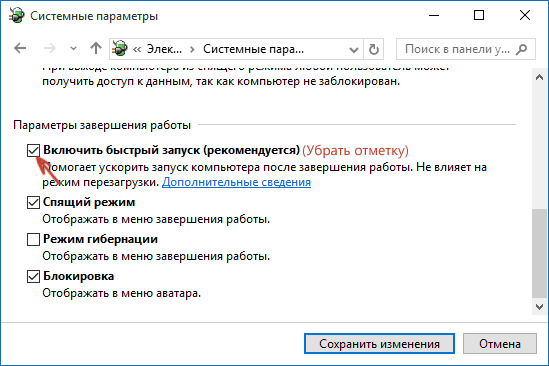
Примечание: в некоторых случаях, когда монитор подключен к дискретной видеокарте, вы можете не увидеть экран БИОС, а также информацию о клавишах для входа в него. В этом случае может помочь его переподключение к интегрированному графическому адаптеру (выходы HDMI, DVI, VGA на самой материнской плате).
The BIOS (Basic Input/Output System) is a vital component of your computer that initializes hardware components such as the processor, memory and drives when you start the system. It acts as an interface between your computer’s hardware and software. If you Launch BIOS, you can configure settings like the boot order, and system time, and perform critical system optimizations. If you need to access these settings, here’s a detailed guide on how to run BIOS on Windows 10 and 11.
Table of Content
- What is BIOS?
- Method 1: Access BIOS at Startup
- Method 2: Access BIOS from Windows Settings
- Method 3: Access BIOS via Shift + Restart
- Method 4: Access BIOS Using Setup Key
- Method 5: Access BIOS Through Windows Command Prompt
- Method 6: Using the Run Dialog to Access BIOS
- Troubleshooting Tips
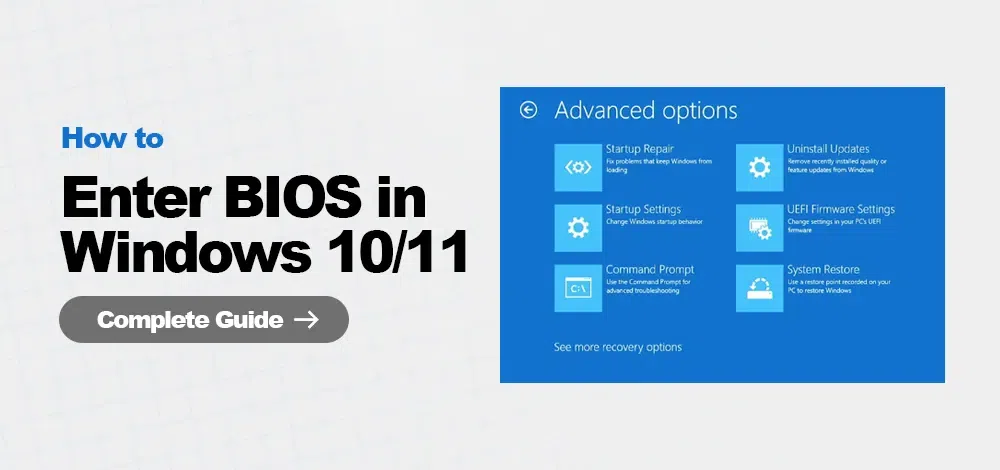
What is BIOS?
BIOS, or Basic Input/Output System, is firmware embedded in your computer’s motherboard. It plays an essential role during the boot process by initializing hardware, making it possible for the operating system to communicate with hardware components. Accessing the BIOS allows you to change several system settings, such as boot priority, security settings, and overclocking features.
While the steps provided here generally apply to most systems, some variations may exist based on the manufacturer and BIOS version. Some newer systems use UEFI (Unified Extensible Firmware Interface), which may have different methods for accessing and using the BIOS.
6 Methods to Enter BIOS Setup on Windows 10 & 11
The BIOS (Basic Input/Output System) or UEFI (Unified Extensible Firmware Interface) is an essential component of a computer. It helps control the hardware settings and enables the operating system to interact with various hardware components such as the CPU, memory, and storage devices. If you need to adjust certain system settings such as boot order, secure boot settings, or overclocking, entering the BIOS is necessary. Below are the various methods to access BIOS on Windows 10 and 11 systems.
Method 1: Access BIOS at Startup
The most traditional way to access BIOS is during the initial boot BIOS process. When you power on your PC, pressing a specific key immediately after the system starts will allow you to enter the BIOS.
Step 1: Restart your computer and immediately press the BIOS key
Simply start with restarting your computer and as soon as logo appear press the BIOS Key to enter the BIOS. The BIOS key can vary depending on your computer’s manufacturer. Common keys include Del, F2, F10, Esc, and F12. You’ll usually see a message on the screen that says, «Press [key] to enter setup» during boot. Make sure to press the key right after powering on, before Windows begins loading.
List of Common BIOS Keys:
- F2
- Delete (Del)
- Esc
- F10
- F12
- Ctrl+Alt+Del
- Ctrl+Alt+Esc
- Fn + F2 (for some laptops)
BIOS Keys List by Manufacturer
- Acer: F2 or Del
- ASUS: F2 (for most PCs), F2 or Del (for some motherboards)
- Dell: F2 or F12
- HP: F10
- Lenovo: F1 (desktops), F2 or Fn+F2 (laptops), Enter then F1 (ThinkPads)
- MSI: Del
- Microsoft Surface Tablets: Volume Up button
- Samsung: F2
- Toshiba: F2
Step 2: Wait for the BIOS screen to appear
Once you’ve successfully pressed the key, you should see the BIOS or UEFI interface. Here, you can configure settings like boot order, secure boot, or system time.
Additional Tip: If you miss the timing and Windows starts loading, simply restart the system and try again.
Method 2: Access BIOS from Windows Settings
In Windows 10 and 11, you can access the BIOS directly from the Settings menu. This is a particularly useful method if you can’t access BIOS using the traditional key press at startup.
- Press Windows + I to open the Settings app.
- Alternatively, you can click on the Start menu and select Settings.
Step 2: Navigate to Update & Security
In the Settings window, go to Update & Security and select Recovery from the left sidebar.
Step 3: Click on Restart Now under Advanced Startup
Under the Advanced Startup section, click on Restart Now. This will restart your PC into a special menu for advanced troubleshooting.
Step 4: Select UEFI Firmware Settings and Restart
Once your computer restarts, you will be presented with a menu. Choose Troubleshoot > Advanced Options > UEFI Firmware Settings, then click on Restart.
Important Tip: This method is helpful if you are unable to press the BIOS key in time during boot-up.
Method 3: Access BIOS via Shift + Restart
You can use the Shift + Restart combination to access the BIOS without needing to navigate through the Settings menu. This method is particularly useful for users who find it difficult to press the BIOS key at the correct time.
In the Start menu, click on the Power button.
Step 2: Hold down the Shift key and click Restart
Hold the Shift key on your keyboard and then click Restart from the power options. This will initiate the Advanced Startup menu.
Step 3: Navigate to UEFI Firmware Settings
After your system restarts, select Troubleshoot > Advanced Options > UEFI Firmware Settings and click Restart
Additional Tip: This method works on both Windows 10 and Windows 11, providing a way to access BIOS without using the BIOS key during startup.
Method 4: Access BIOS Using Setup Key
On some computers, especially newer ones, you may be able to access BIOS using a «Setup» key, typically during the initial boot sequence. This method is usually available for systems with UEFI firmware.
Step 1: Power off your computer
Ensure your PC is completely powered off before proceeding.
Step 2: Press the Setup key when turning on the computer
Turn on the computer, and immediately press the Setup key (commonly F2, F12, or Del) when the manufacturer logo appears.
Here’s a list of common BIOS setup keys by manufacturer:
Desktop PCs BIOS Setup Key List
- Acer: F2 or Del
- ASRock: F2 or Del
- ASUS: F2 or Del
- Dell: F2 or F12
- ECS: Del
- Gigabyte: F2 or Del
- HP: F10
- Lenovo: F1
- MSI: Del
- Samsung: F2
Laptops BIOS Setup Key List
- Acer: F2
- ASUS: F2
- Dell: F2
- HP: F10
- Lenovo: F2 or Fn+F2
- MSI: Del
- Samsung: F2
- Toshiba: F2
Other Devices BIOS Setup Key List
- Microsoft Surface Tablets: Volume Up button
- Apple MacBooks: Command + Option + P + R
Step 3: Wait for BIOS Setup to appear
After pressing the key, the BIOS setup screen should appear, allowing you to make changes to your system settings.
Tip: If you do not see the prompt for the Setup key, you can refer to your computer’s manual or the manufacturer’s website for the exact key to press.
Method 5: Access BIOS Through Windows Command Prompt
Another option to access BIOS is by using the Command Prompt to initiate a restart into Advanced Startup. This is an ideal method for users who prefer using commands or need an alternative method when other approaches fail.
Step 1: Open Command Prompt as Administrator
Press Windows + X and select Command Prompt (Admin) or Windows PowerShell (Admin) from the menu.
Step 2: Enter the Command to Restart into Advanced Startup
Type the following command and press Enter:
shutdown /r /o /f /t 00
This command will restart your computer into the Advanced Startup Options screen.
Step 3: Select UEFI Firmware Settings and Restart
From the Advanced Startup Options menu, select Troubleshoot > Advanced Options > UEFI Firmware Settings, and then click on Restart.
Important Tip: This method is especially useful if you’re comfortable with using the Command Prompt and need a quick way to access BIOS.
Method 6: Using the Run Dialog to Access BIOS
This method allows you to access BIOS via the Run dialog box, which is another way to reach the Advanced Startup Options.
Step 1: Press Windows + R to open the Run dialog
In the Run dialog box, type msconfig and hit Enter.
Step 2: Go to the Boot Tab in System Configuration
In the System Configuration window, click on the Boot tab.
Step 3: Enable Safe Boot and Restart
Check the Safe Boot option, click OK, and restart your computer. This will bring up the Advanced Startup Options menu.
Step 4: Navigate to UEFI Firmware Settings
From the restart menu, choose Troubleshoot > Advanced Options > UEFI Firmware Settings and click Restart.
Troubleshooting Tips
- BIOS Key Not Working: If you’re unable to press the correct key at startup, it might be too fast. Try enabling the Fast Boot option in your BIOS or adjusting the Boot Priority in the UEFI firmware settings.
- No BIOS Option Displayed: If you don’t see the BIOS option when pressing the key or using the methods above, it could be that your system uses UEFI. Make sure to access the UEFI Firmware Settings instead.
- Cannot Access BIOS After Multiple Attempts: If you’re unable to enter BIOS after several tries, make sure your keyboard is connected properly, especially if you’re using a wireless or USB keyboard. Wired keyboards are generally more reliable during the boot process.
Conclusion
Accessing the BIOS on Windows 10 and 11 can be done in several ways depending on the manufacturer and your system configuration. Whether you use the traditional key press method or one of the alternative options available within Windows, each method provides a reliable way to access critical system settings. Always proceed with caution when making changes in the BIOS, as improper settings can cause system instability. If you’re unsure about a specific setting, it’s best to consult your system manual or manufacturer’s support page.
Обновлено 30 ноября 2022, 13:25

Вход в BIOS на устройстве понадобится, чтобы вернуть компьютер к заводским параметрам или изменить настройки. Начинающим пользователям бывает сложно отыскать нужные клавиши. РБК Life собрал подсказки для разных моделей ноутбуков и альтернативные способы для операционных систем Windows.
Что такое BIOS, функции
BIOS (Basic Input/Output System) — это набор программ, установленных в материнскую плату устройства и связанных с аппаратным обеспечением и другими устройствами.
В современные ПК устанавливают UEFI (Unified Extensible Firmware Interface). Его тоже называют BIOS, хотя с технической точки зрения это не совсем верно. [1] Способ входа, вид интерфейса (например, русскоязычная версия) и настройка BIOS / UEFI зависит от производителя, однако задачи у них практически не отличаются.
Основные функции BIOS в компьютерной системе:
- распознавание всех подключенных устройств компьютера (оперативная память, процессор, клавиатура, мышь, жесткий диск),
- загрузка в память важных файлов операционной системы. [1]
Большинство людей никогда не заходят в BIOS, но иногда нужно сменить загрузочное устройство (например, чтобы запустить установщик Windows с флешки) или же с ПК что-то пошло не так, появился «синий экран» — тогда может помочь сброс настроек до заводских. [2]
Значения, которые можно изменить в BIOS, хранятся в специальной микросхеме динамической памяти — CMOS (Complementary Metal Oxide Semiconductor). [3] При запуске устройства BIOS взаимодействует с CMOS: считывает настройки, проверяет корректность работы аппаратных устройств (например, клавиатуры и мыши), тестирует их — процесс называется POST (Power-on Self-Test). В это время можно нажать на клавиатуре специальную клавишу и перейти в BIOS. [1]
Как зайти в BIOS при включении стационарного ПК
Войти в BIOS можно двумя способами:
- во время включения компьютера (до того момента, пока появится рабочий стол);
- из работающей операционной системы (от Windows 8 и выше).
Первый способ подойдет для входа в BIOS на старых устройствах. Обычно производители оставляют подсказку: после включения в левой нижней части экрана есть надпись с нужной кнопкой. Например, «Press [клавиша] to run BIOS setup».
Чаще всего войти в BIOS можно с помощью клавиш Del или F2 при загрузке компьютера. Если у вас устройство с операционной системой от Windows 8 и выше, проще открыть нужные настройки из системы.
Как зайти в UEFI (BIOS) из Windows 8, 10 и 11
Устройства на Windows 8 и выше используют современное обновление BIOS — UEFI. Некоторые системы с UEFI загружаются очень быстро — меньше чем за 200 миллисекунд (мс). Даже лучшие специалисты в Microsoft успевают нажать клавишу только раз в 250 мс! [4] Естественно, пользователь не всегда может среагировать: приходится перезагружать компьютер несколько раз или быстро нажимать на одну и ту же клавишу. В этом случае входите в BIOS из самой Windows.
Windows 11
Шаг 1. Перейдите в «Настройки» (горячие клавиши Win + I). Выберите «Система».
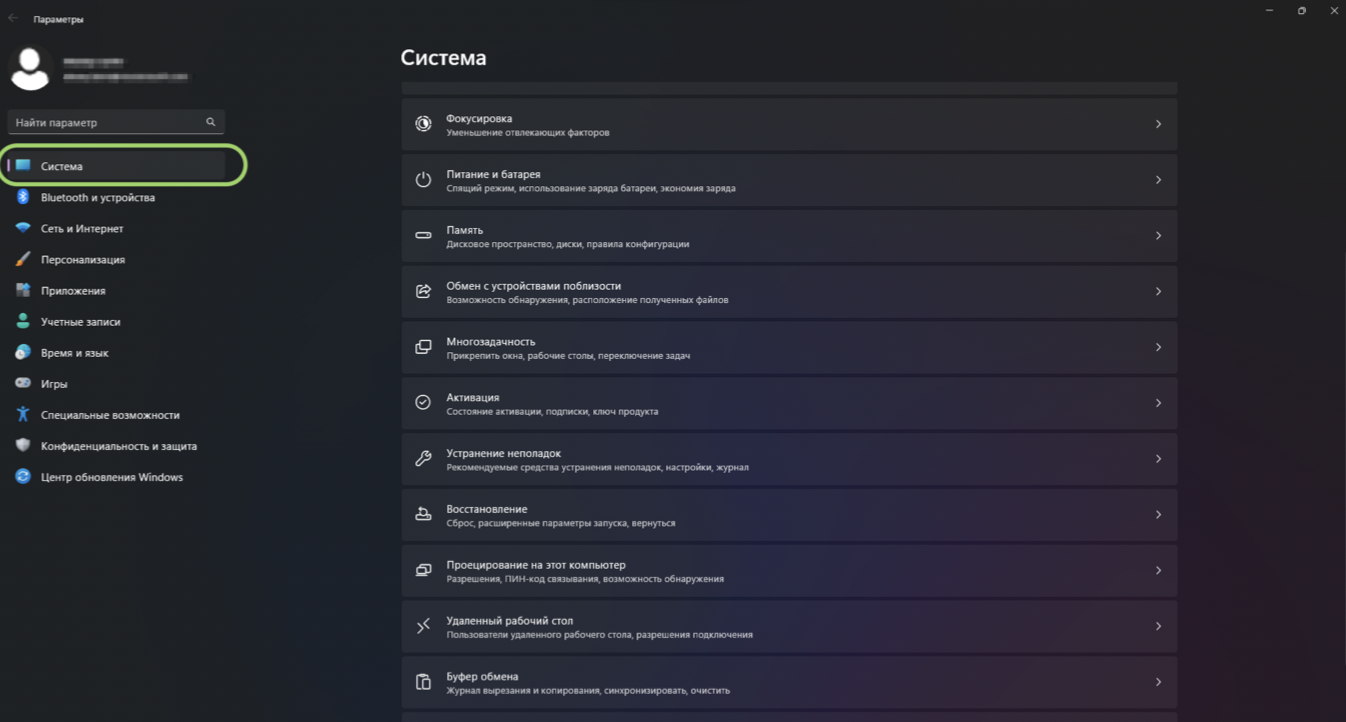
Фото: Скриншот Windows 11
Шаг 2. Нажмите «Восстановление».
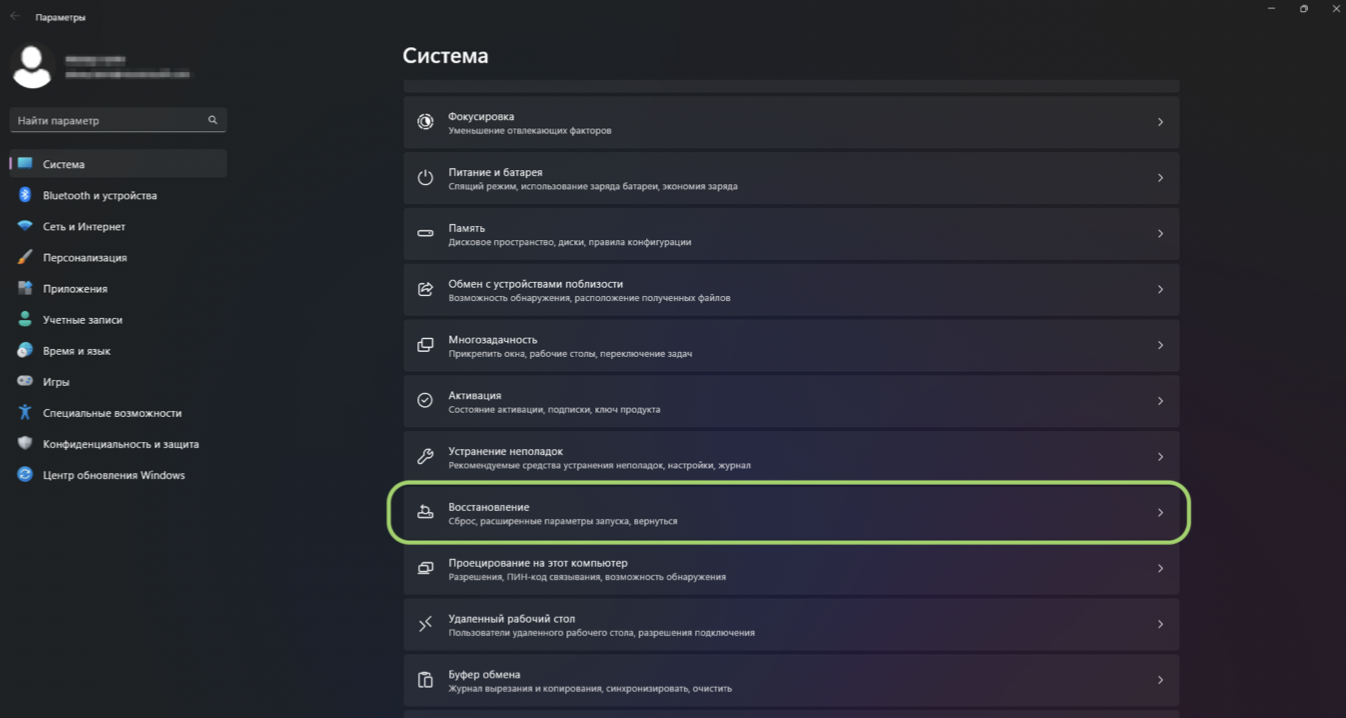
Фото: Скриншот Windows 11
Шаг 3. В опции «Расширенный запуск» нажмите «Перезагрузить сейчас».
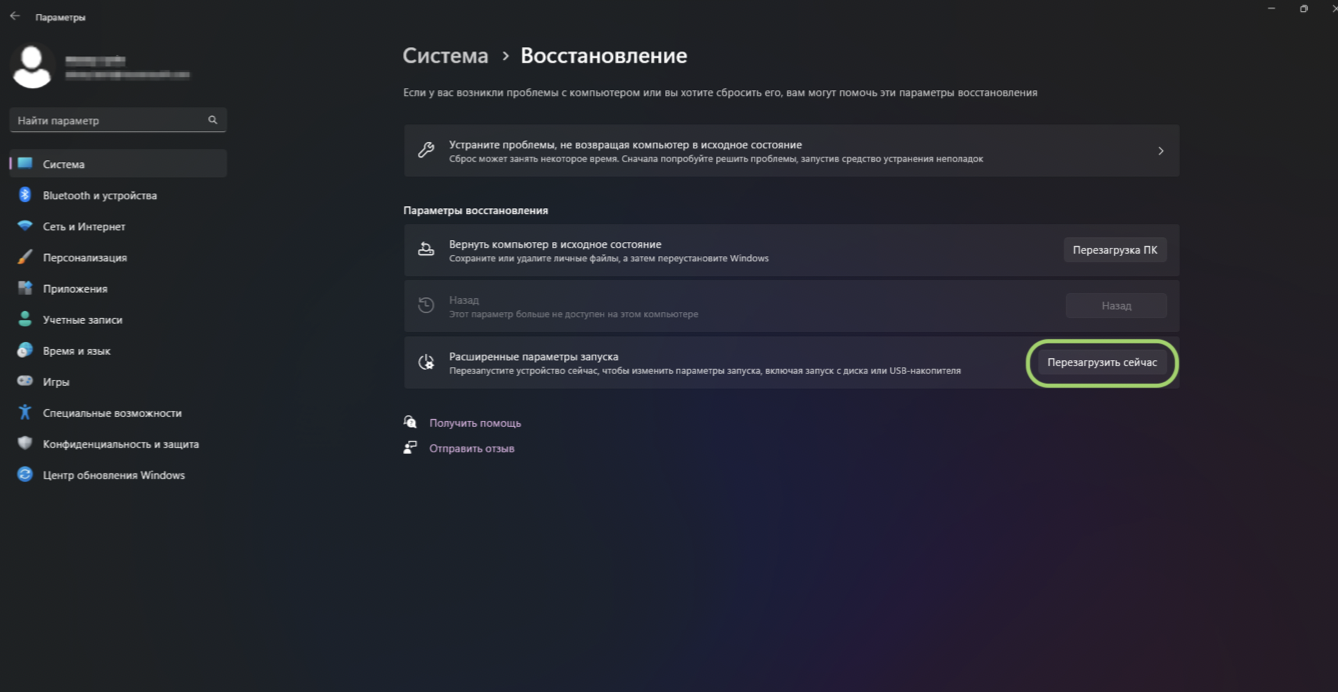
Фото: Скриншот Windows 11
Шаг 4. Появится всплывающее окно с предупреждением, нажмите «Перезапустить».

Фото: Скриншот Windows 11
Шаг 5. На появившемся экране перейдите в «Поиск и устранение неисправностей».
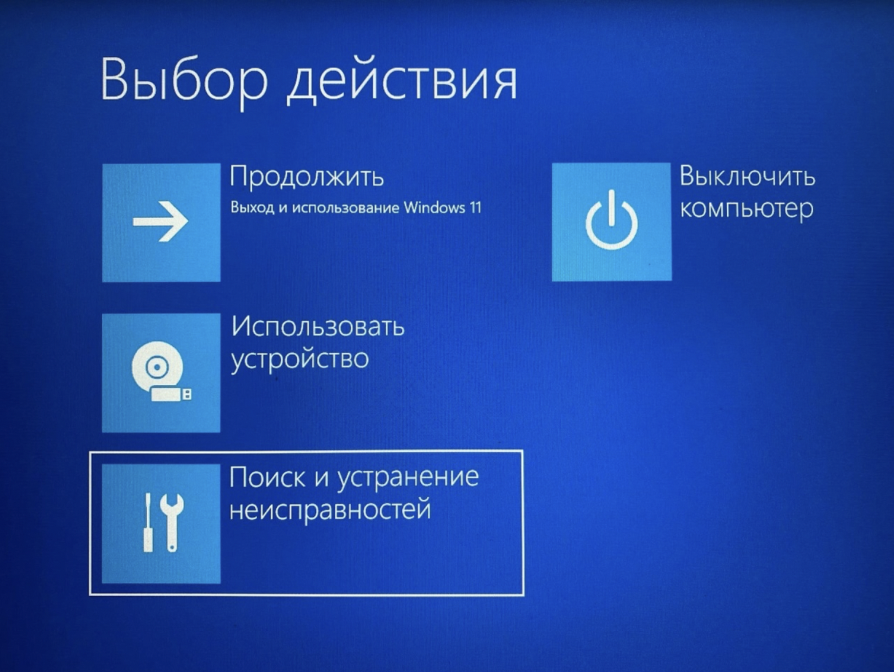
Фото: Скриншот Windows 11
Шаг 6. Выберите «Дополнительные параметры».
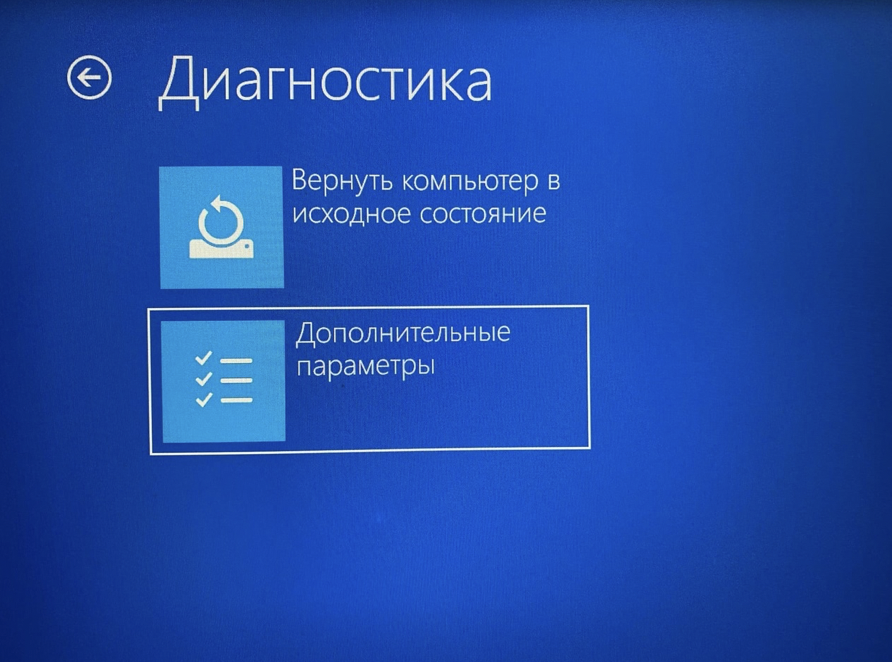
Фото: Скриншот Windows 11
Шаг 7. Нажмите «Параметры встроенного ПО UEFI».
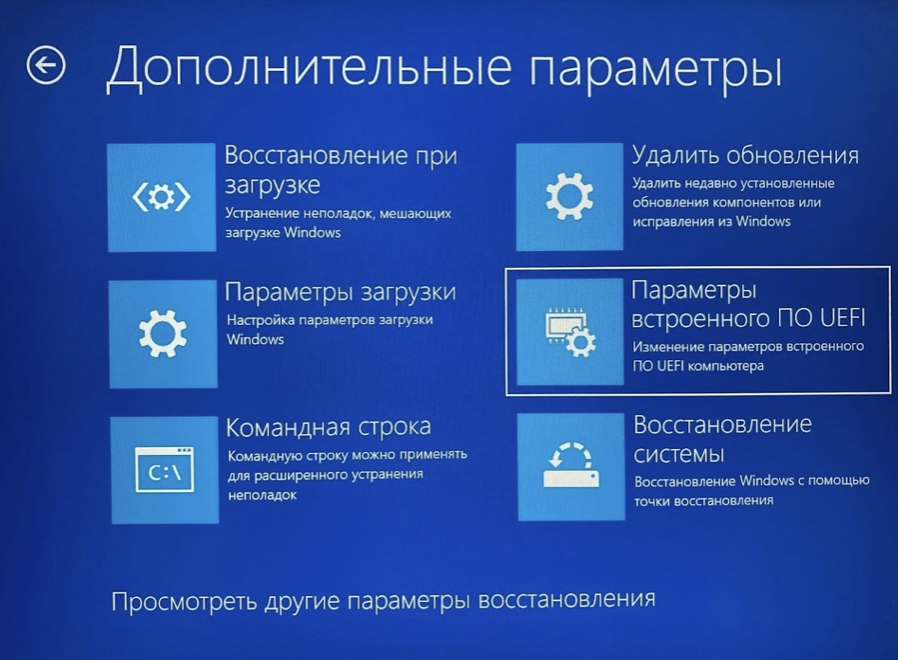
Фото: Скриншот Windows 11
Шаг 8. Подтвердите действие, нажав кнопку «Перезагрузить». Устройство перенаправит сразу в UEFI Windows 11. [5]

Фото: Скриншот Windows 11
Вход в UEFI в Windows 8, 8.1 и 10 почти не отличается от входа в Windows 11. Сложности могут возникнуть до функции «Перезапуска». Остальные шаги идентичны.
Windows 10
Перейдите в «Настройки» (горячие клавиши Win + I) -> «Обновление и безопасность» -> «Восстановление» -> в опции «Расширенный запуск» нажмите «Перезагрузить сейчас». [5]
Следующие шаги идентичны тому, как это работает в Windows 11. Перейдите в «Поиск и устранение неисправностей» -> «Дополнительные параметры» -> «Параметры встроенного ПО UEFI» -> «Перезагрузить».
Windows 8.1
В настройках устройства (Win + I) нажмите «Обновление и восстановление» -> «Восстановление» -> в разделе «Расширенный запуск» нажмите «Перезагрузить сейчас» -> «Диагностика» -> «Дополнительные параметры» -> «Параметры встроенного ПО UEFI» -> «Перезагрузить».
Windows 8
В настройках устройства (Win + I) выберите «Настройки» -> «Изменение параметров компьютера» -> «Общие» -> в разделе «Расширенный запуск» нажмите кнопку «Перезагрузить сейчас» -> «Диагностика» -> «Дополнительные параметры» -> «Параметры встроенного ПО UEFI» -> «Перезагрузить». [4]
Как зайти в BIOS при включении ноутбука
Если у вас ноутбук на Windows 8 и выше, воспользуйтесь способом выше и войдите в BIOS из системы. Если у вас более устаревшая модель, при загрузке устройства нажмите функциональные клавиши. Чаще всего — это F2, Del, ESC.
- Asus — F9. Asus R503 °C — Del, Asus Eee PC 1025c — F2.
- Acer — Del, F2. Acer Aspire — F2 или Ctrl + F2. Также на разных моделях встречаются клавиши F1, Ctrl + Alt + Esc.
- Lenovo — F1, F2 или Fn + F2.
- HP — F10 или Esc. Реже — F11, F8, F2, Del.
- Samsung — F2 или Del. NP900 — F12. На некоторых моделях вместе с функциональной клавишей нужно зажимать Fn.
- Dell — F2 или Fn + Del. Иногда срабатывают сочетания Fn + F1, Fn + Esc. [6]
В ноутбуках на macOS нет BIOS, частично ее функции выполняет система EFI (Extensible Firmware Interface) или Open Firmware на старых версиях. Попытки войти в них могут привести к неполадкам с устройством. [7]
78
78 people found this article helpful
Boot into BIOS on startup
Updated on November 15, 2021
What to Know
- Enter BIOS by pressing a specific key at the precise time.
- F2, F10, or DEL are the common hotkeys, but this can differ for each PC brand.
- Newer computers have UEFI BIOS which can be booted into from Windows Settings.
This article explains how to enter BIOS (Basic Input / Output System) on Windows 10.
How To Access (Legacy) BIOS on Windows 10
Entering the BIOS may be necessary to change the system date and time, hardware settings, or the boot order. You can enter BIOS with a keypress on a specific hotkey while the system is booting. But the time interval is short so be ready to press the right key at the right time just after the POST beep.
Newer computers with UEFI BIOS offer an easier way to enter the BIOS (or the Setup as it is often called) by booting into Windows 10 first.
The precise moment to press the BIOS hotkey is somewhere after the computer switches on and Windows initializes. Older computers on legacy BIOS give some time (though not much) to press the key. If the brand logo disappears before the keypress, the time has passed and you will need to restart the PC again to enter BIOS.
Tip:
Look out for a message that says “Press to Enter Setup”. Here, Key_Name can be the DEL, ESC, F2, F10, or any other key supported by the manufacturer.
-
Press the Power button to switch on your computer.
-
Press the BIOS hotkey (e.g. F2, F10, Esc, or DEL) as soon as the brand’s splash screen appears.
-
Tap on the hotkey repeatedly until you enter the setup mode. Alternatively, keep your finger on the key even before you switch on the computer and press it until the BIOS comes up.
The exact key or even a key combination depends on the make of the computer. Consult the computer’s manual for the right key if it’s not displayed on the boot screen.
Here are some common keys you can try on these brands.
| Brand | BIOS Key |
| HP | F9 or Esc |
| Dell | F12 |
| Acer | F12 |
| Lenovo | F12 |
| Asus | Esc |
| Samsung | F12 |
| Sony | Esc |
| Microsoft Surface Pro | Volume Down Button |
How To Boot Into UEFI BIOS on Windows 10
The Unified Extensible Firmware Interface (UEFI) is the successor to the older BIOS. The firmware is a part of all modern computers and provides faster boot times. It is functionally more sophisticated and visually richer than the legacy BIOS. It also supports both the keyboard and the mouse.
Faster boot speed is a unique feature of UEFI firmware settings, so you may find it easier to enter the BIOS from within Windows 10 without going through the startup routine.
-
Select Settings from the Start Menu (or press Windows + I).
-
Go to Update & Security. Select Recovery.
-
Go down to Advanced startup. Select Restart now and let the computer reboot.
-
The computer restarts to display boot options. Select Troubleshoot.
-
Select Advanced options.
NOTE TO PHOTO EDITOR: Please highlight «Advanced Options».
-
Select UEFI Firmware Settings.
-
Select Restart to open the UEFI BIOS.
Thanks for letting us know!
Get the Latest Tech News Delivered Every Day
Subscribe
